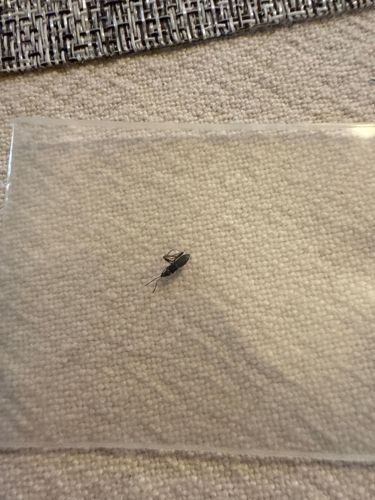Springtail
Scientific Name: Collembola (Class)
Order & Family: Collembola (Order, often treated as a class)
Size: Typically 0.2 mm to 10 mm, most commonly 1-3 mm.

Natural Habitat
Damp environments rich in organic matter, such as soil, leaf litter, under bark, decaying wood, compost, and sometimes potted plants or bathrooms indoors.
Diet & Feeding
Primarily detritivores, feeding on decaying organic matter, fungi, algae, bacteria, spores, and sometimes pollen or plant roots.
Behavior Patterns
Springtails are known for their ability to 'spring' or 'jump' using a tail-like appendage called a furcula located on their abdomen. They are usually found in large numbers in moist conditions and are not typically seen as solitary insects unless disturbed. They reproduce rapidly, especially in favorable conditions, and undergo direct development (no metamorphosis).
Risks & Benefits
Generally beneficial as decomposers, contributing to soil health and nutrient cycling. They are not known to bite, sting, or transmit diseases to humans or pets, and are not considered pests in most situations. However, large indoor populations might indicate excessive moisture or mold growth, which could be a risk to human health.
Identified on: 10/12/2025